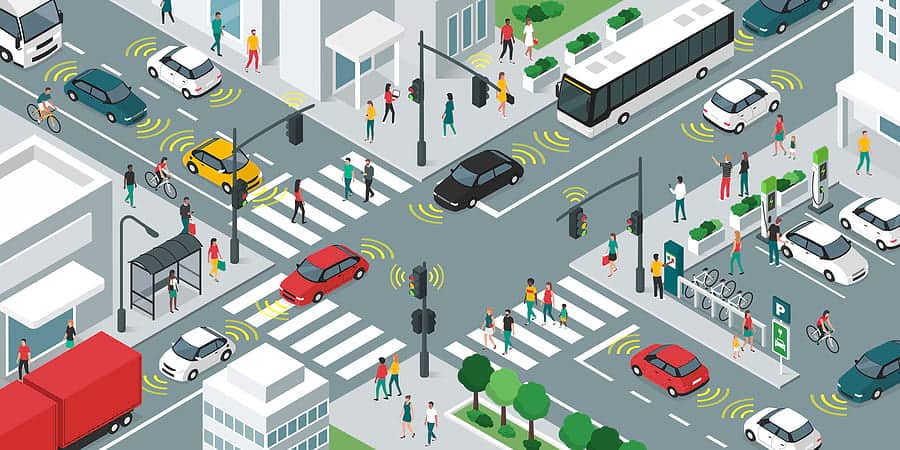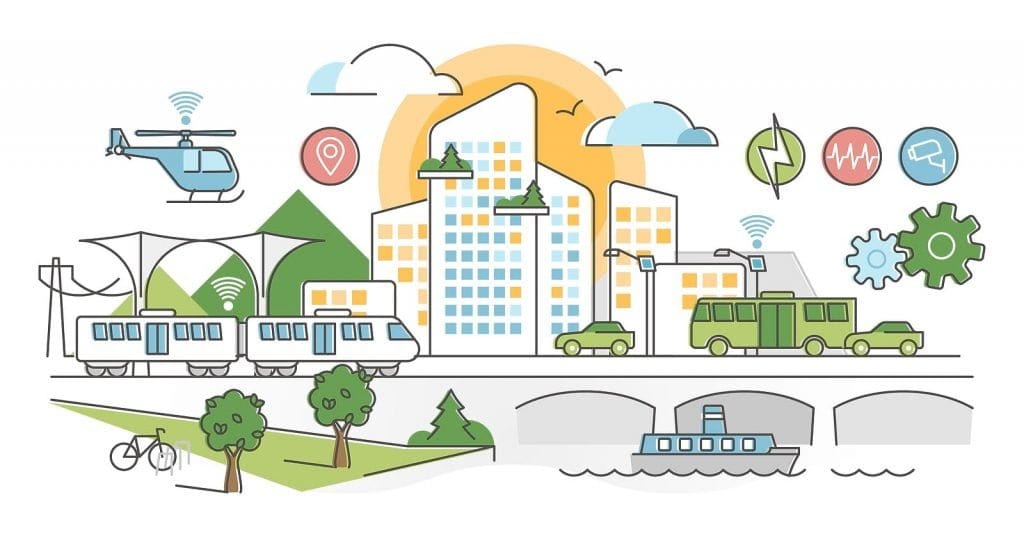Sensors are devices that detect and respond to changes in an environment, and they make up an integral part of the IoT, or Internet of Things. IoT sensor inputs may come from various sources such as light, temperature, motion, or pressure. Crucially, sensors can give an output of valuable information — and if they’re connected to a network (as in the case of the IoT), they can share data with other connected devices and management systems.
IoT sensors can give early warning of potential problems, enabling businesses to take remedial action or perform predictive maintenance, thereby avoiding major issues or costly downtime. Business leaders can also analyze the information from sensors for patterns and observations that give insight into crucial trends or provide the foundation for informed and data-driven decisions.

Sensors come in all shapes and sizes. Some are limited to a specific function, while others include several modules, allowing for the measurement and monitoring of many data sources. In mixed technology environments or in areas with variable network coverage, it’s important for IoT sensors to include digital and analog inputs so that they can read data from legacy sources.
Types of Sensors in IoT
Just as there are many designs and form factors, there are many types of IoT sensors, with an even greater number of applications or use cases. The main types include the following:
Temperature Sensors
Temperature sensors measure the amount of heat energy in a source, enabling them to detect temperature changes. They can be critical in any application where environmental or device temperatures have to be held at specific levels. These include manufacturing industries, agriculture, and health care.
Humidity Sensors
Humidity sensors measure the amount of moisture or water vapor in air or other gases. Heating ducts, vents, and air conditioning systems in both industrial and residential settings often employ humidity sensors. The information they provide also assists in weather prediction and reporting applications.
IoT Sensors: Pressure Sensors
These sensors detect changes in the pressure of gases and liquids and communicate these changes to connected systems. Commonly used in testing for leaks, pressure sensors are a vital component in the manufacturing and maintenance of water systems and other piped networks.
Proximity Sensors
Proximity sensors often emit electromagnetic fields or beams of radiation such as infrared, as a means of detecting objects near the device, without making physical contact. Parking lots at malls, stadiums, and airports use proximity sensors to indicate the availability of parking spaces. The sensors also have applications on the assembly lines of chemical plants, food production facilities, and many other types of industries.
Level Sensors
In industries such as oil production, water treatment, or food and beverage manufacturing, level sensors can detect the level of substances, including liquids, powders, and granular materials.
Accelerometers
Accelerometers measure an object’s acceleration or the rate at which its speed or velocity changes over time. Some accelerometers can also detect changes in gravity. This makes them instrumental in applications such as vehicle fleet monitoring and in anti-theft systems that provide an alert if any object that should be stationary is being moved.
IoT Sensors: Gyroscopes
Gyroscope sensors measure an object’s speed and rotation around an axis, technically known as its angular rate or angular velocity. They are employed in-car navigation and anti-skid or electronic stability control systems. Gyroscope sensors also feature in motion-sensing tools for video games and camera-shake detection systems.
Gas Sensors
Gas sensors monitor and detect changes in air quality, including the presence of toxic, combustible, or hazardous gases. The manufacturing, chemical research, mining, oil, and gas industries all use gas sensors. The carbon dioxide or smoke detectors used in many homes are another application.
IoT Sensors: Infrared Sensors
Infrared sensors either emit or detect infrared radiation as a mechanism for sensing changes in their environment and can also measure the heat emitted by objects. In health care, infrared sensors simplify the monitoring of blood flow and blood pressure. Art historians using infrared sensors can unearth hidden layers in paintings. And in the home, televisions use infrared sensors to interpret the signals sent from a remote control.
Optical Sensors
Optical sensors convert rays of light into electrical signals and are widely deployed in smartphones, where some ambient light sensors can extend battery life. In the health care sector, optical sensors are used in breath analysis and heart-rate monitors. And in the automotive industry, vehicles use optical sensors to recognize signs, obstacles, and other road features.
Sound Sensors
Sound sensors detect sound waves through their intensity, converting them into electrical signals. Once a device detects a sound intensity change, it can send the data back to a dashboard. Besides detecting the presence of sound in an otherwise quiet room, some sensor systems incorporate tools that record sound as soon as the intensity changes, making them suitable for security purposes.
Some IoT Sensors to Watch out for
Recent advances in IoT technology, including cellular IoT and LPWAN (Low-Power Wide-Area Networking), provide new ways of using sensors. These range from occasional measurements to continuous, real-time remote monitoring across multiple industrial and consumer applications. New use cases also derive from the combination of two or more sensor functions within one device. Examples include:
IoT Sensors: Image
Suppose you think of a camera as a two-dimensional combination optical and infrared sensor providing a matrix of measurements over time. In that case, cameras may be employed as a sensing mechanism, with applications ranging from people counting to AI-powered pattern recognition. In agriculture, the PigVision technology from Asimetrix provides an image-based sensor measuring pig weight in real-time, based on trained AI models.
TMR (Tunneling Magnetoresistive) Sensors
Using some complex quantum mechanics, TMR sensors are becoming increasingly popular for measuring mechanical displacement and motion in industrial, consumer, and automotive applications such as automated parking and self-driving cars.
Reed Switches
A reed switch is an electrical switch operated by a magnetic field. They are typically used in security systems to control the flow of electricity and trigger an action when an unwanted visitor’s presence is detected.
Water Quality Sensors
These sensors use a combination of pH sensors (which measure the level of acidity in a water source), Turbidity Sensors (measuring the amount of light scattered by suspended solids in the water), and ORP or Oxidation-Reduction Potential Sensors (which measure the ability of a solution to act as an oxidizing or reducing agent), to form a complete picture of the quality of a body of water. The Waspmote Water Quality Module from Libelium and the Signet 2724-2726 from Georg Fischer are commercial examples.

